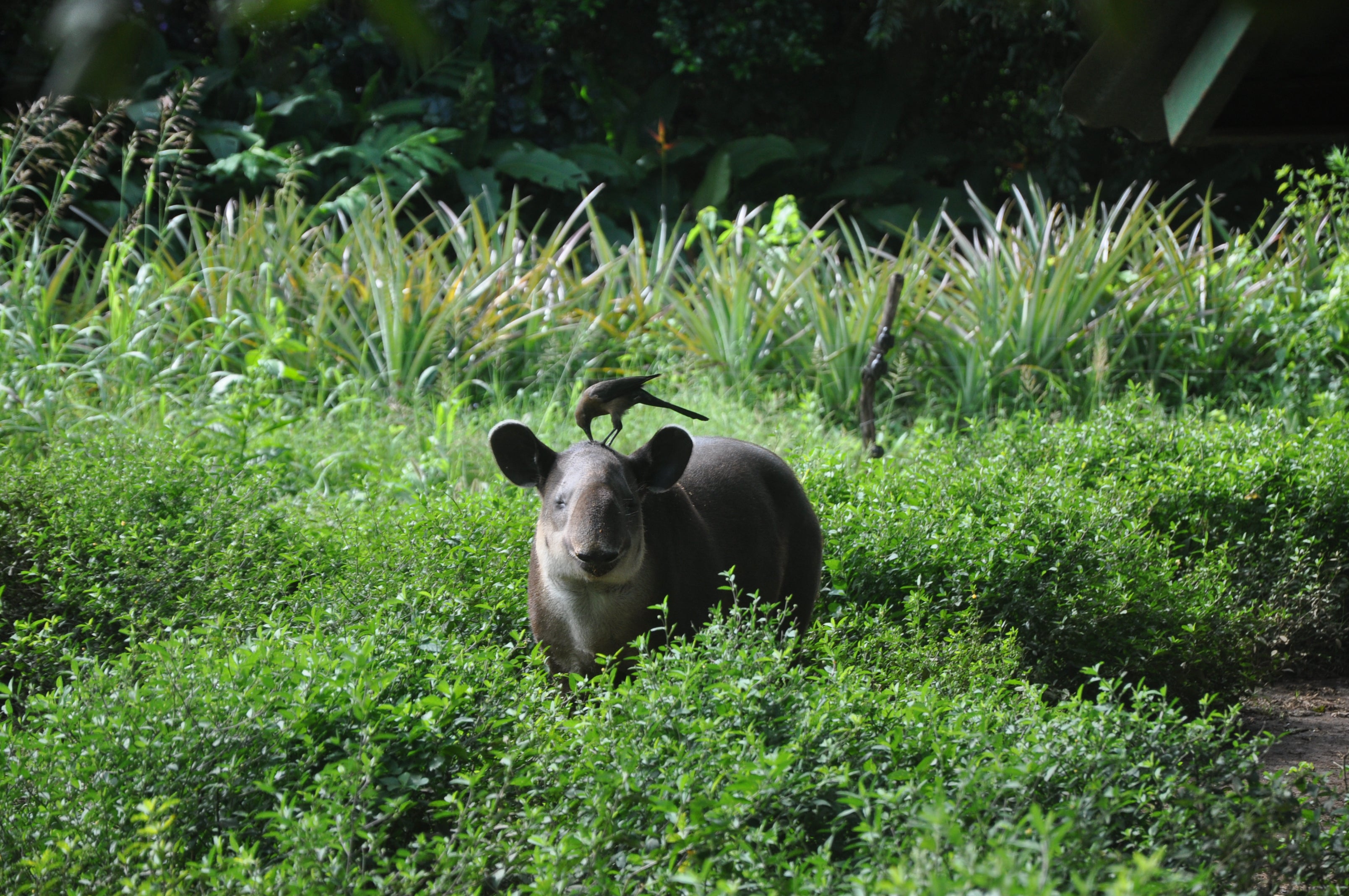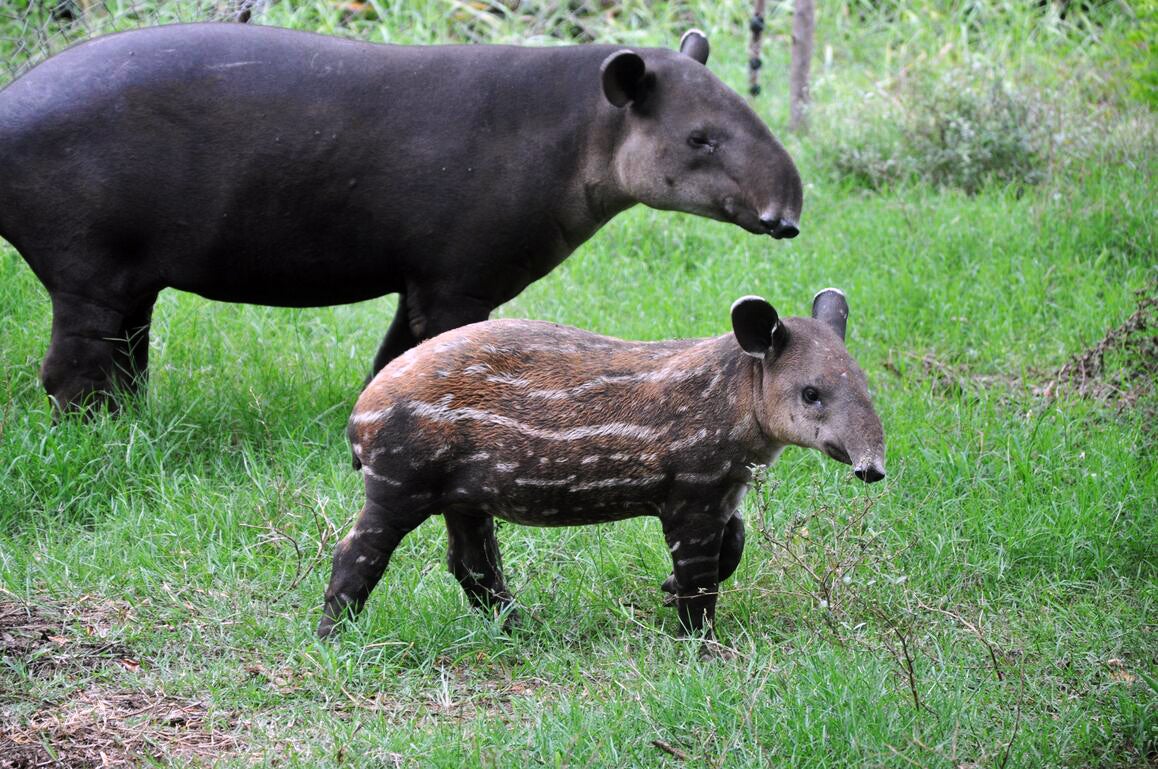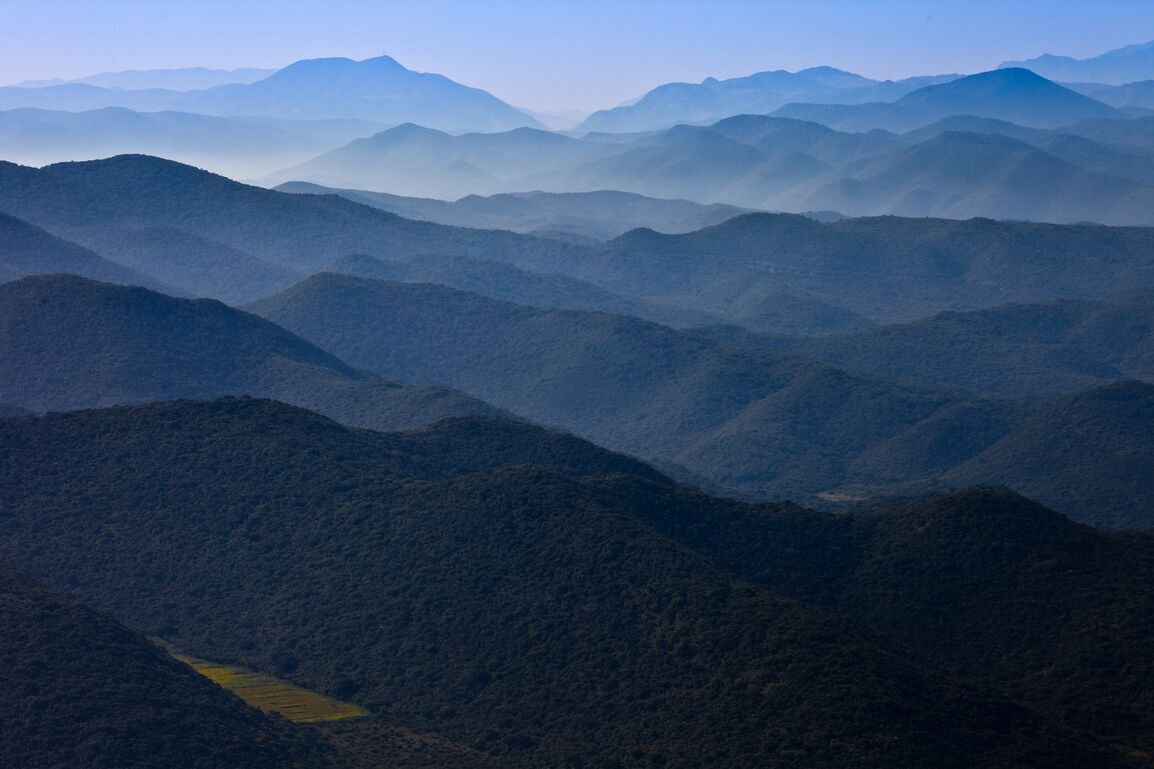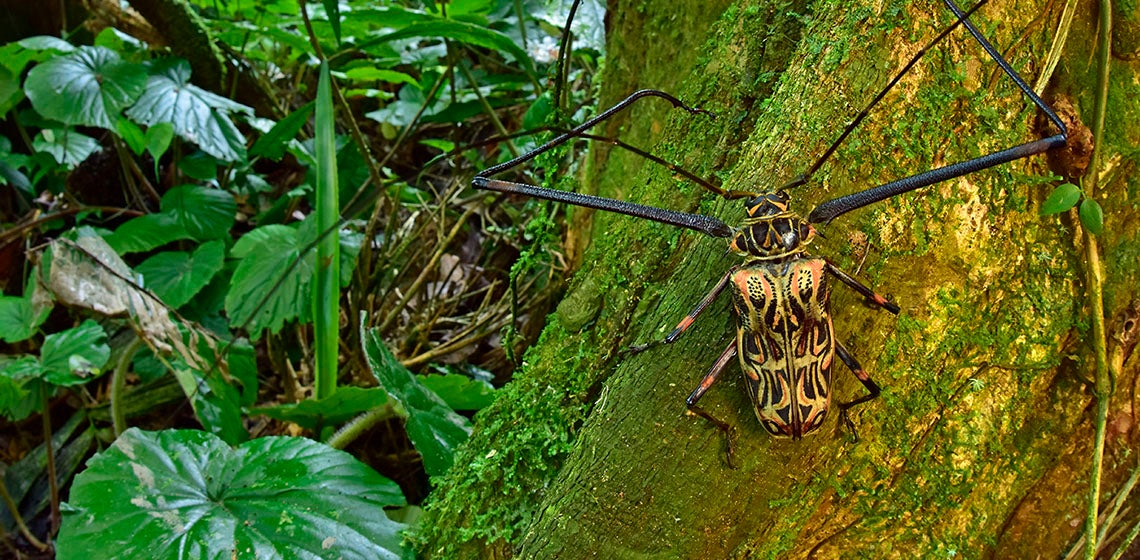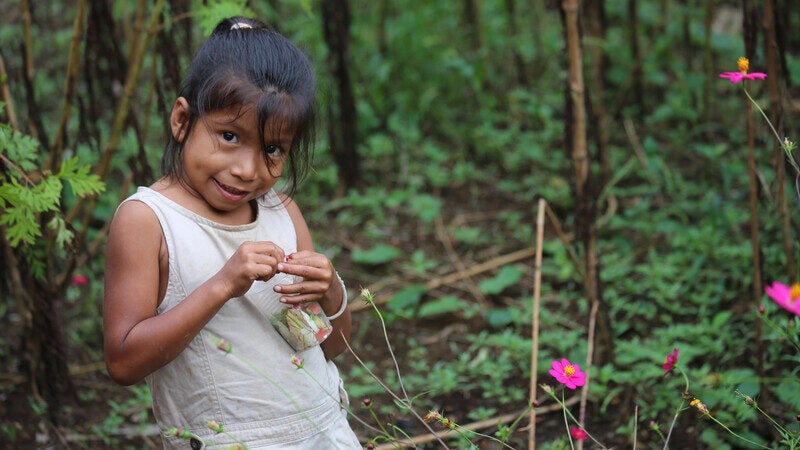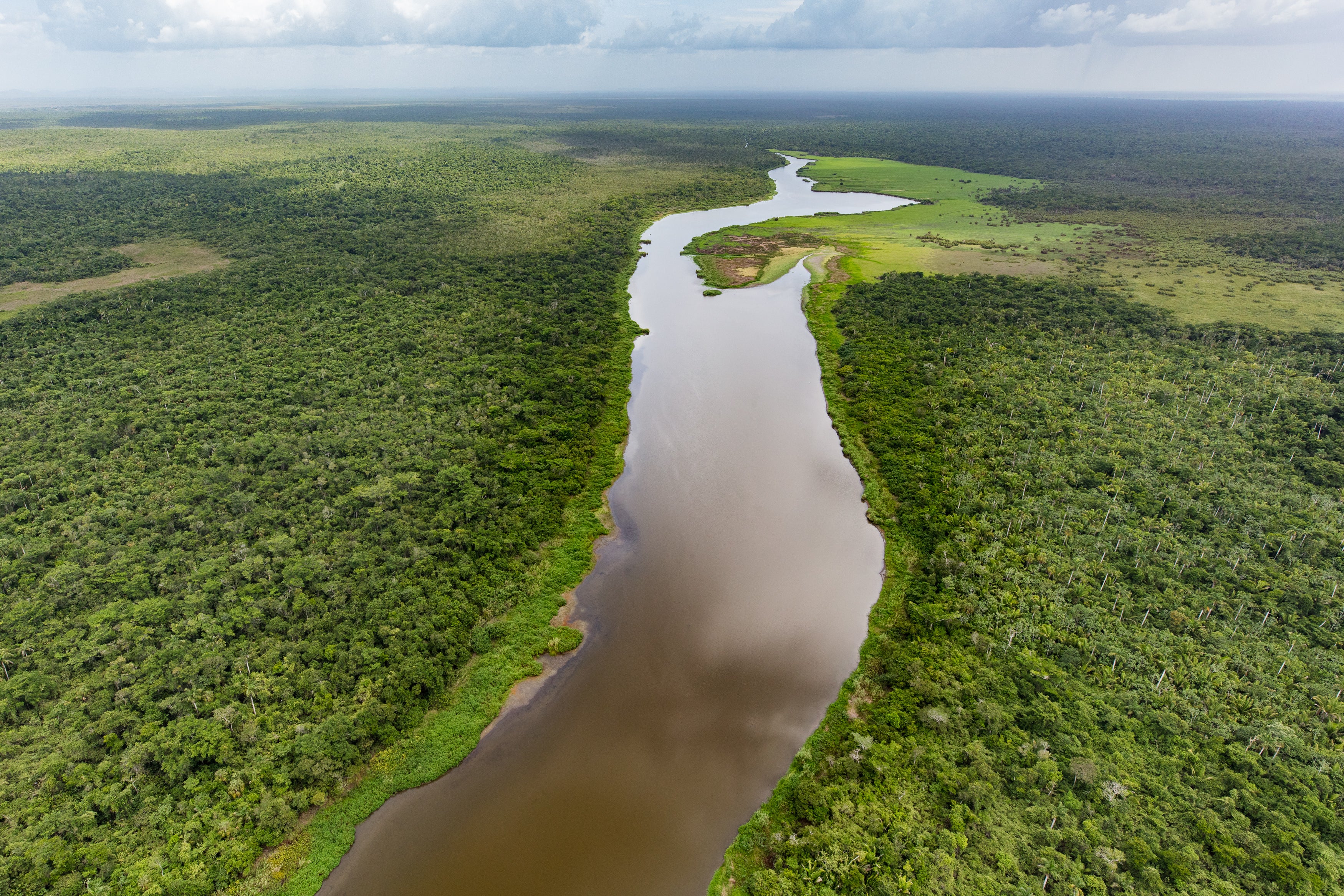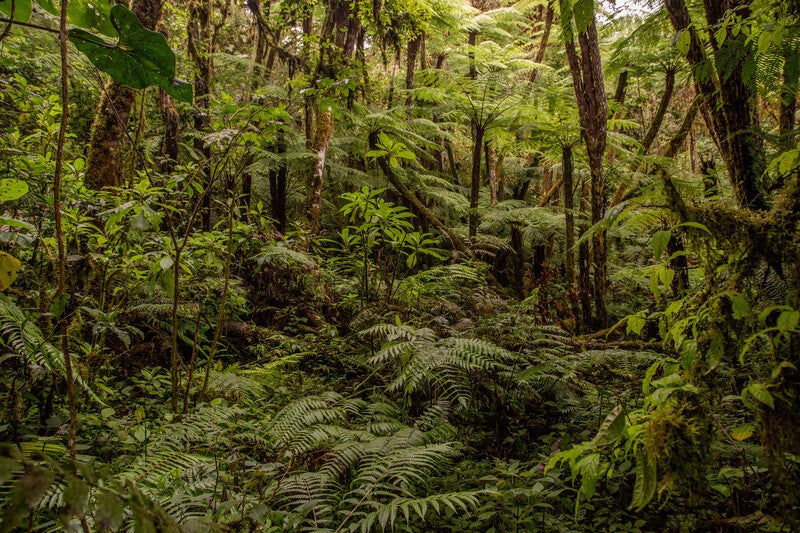Tapirs
DonateRe:wild Tapirs
Tapirs are “primitive” large mammals and haven’t changed very much in at least the past 35 million years. But that’s a good thing! They have an outsized role in shaping and keeping the forests they live in healthy and are known as “gardeners of the forest.”
Three of the world’s four tapir species live in forests, grasslands and swamps; they are great swimmers and enjoy spending time in the water. The Baird’s Tapir can be found from Mexico to Colombia. The Lowland or Brazilian Tapir is found across much of South America, and the Malayan Tapir lives in Malaysia and Sumatra in Southeast Asia. The Mountain Tapir prefers the higher, colder elevations of the Andes. Re:wild focuses on protecting and restoring tapir species in Mesoamerica and South America.
At first glance, it may seem like a tapir is a combination of animals. It has a proboscis— a flexible nose-like organ that allows it to grab hard-to-reach foliage or snorkel when it’s swimming. Despite having a proboscis that might call to mind an elephant’s trunk, tapirs are most closely related to horses and rhinos. Tapirs also have rounded bodies that are larger in the back than the front, making it easier for them to cut a path through thick forest.
All tapirs are herbivores, eating everything including seeds and fruits, leaves, tree bark and aquatic plants. Researchers studying the diet of Baird’s Tapirs in Nicaragua have determined that this species feeds on more than 200 species of plants. As they move through their forest habitats, tapirs disperse the seeds they eat through their scat. This helps forests regenerate and spreads the seeds of certain slow-growing trees with very dense wood – the very trees most important for sequestering carbon. This makes the tapir one of the world’s most heroic helpers in combating climate change; so much so, in fact, that thriving tapir populations could be critical for helping countries meet their commitments to climate change agreements.
Baird’s tapirs, or “Ngarbing” as they are called in the Indigenous Rama language, roam the Five Great Forests in Mesoamerica, which store 50% of the region’s carbon and are critical to addressing climate change. In several of these forests, there is an important wild almond tree known as Dipteryx panamensis. These trees have some of the largest seeds in the forests; they are slow-growing trees with dense wood, which means they also store the most carbon. Large mammals, like Baird’s Tapirs, are the only species capable of eating and dispersing the seeds of this special tree. Without tapirs, there would be fewer wild almond trees, and less carbon locked away in the Five Great Forests. Without tapirs, there would be even more cascading effects on forests—fewer plant species and fewer wildlife species that depend on those plants. Those effects can be felt all the way up to the canopy. The globally endangered Great Green Macaw primarily eats and nests in wild almond trees.
The Mountain, Baird’s and Malayan Tapirs are all classified as Endangered according to the IUCN Red List of Threatened Species. The Lowland Tapir is currently listed as Vulnerable. All four species are threatened by habitat destruction and hunting (for their meat and hides), as well as climate change and road development. Due to their large size, slow rate of reproduction and sensitivity to habitat destruction, tapirs are often among the first species to decline when humans disturb an ecosystem.
When humans do encroach into tapirs’ ranges, the tapirs will sometimes eat crops from farms. In Nicaragua’s Indio Maíz Biological Reserve, 63% of farmers reported that tapirs eat their crops, especially bananas, plantains, corn, cassava and bean plants. This crop-raiding behavior can sometimes cause local farmers to hunt tapirs. Some of Re:wild’s partners are researching crop-raiding behaviors and humane, community-based strategies to discourage tapirs from eating crops.
GLOBAL TAPIR PROGRAM
Re:wild partners with the Houston Zoo, US Fish and Wildlife, Zoo New England, the Tapir Specialist Group, Costa Rica Wildlife Foundation, the Colombian Initiative of Tapir Conservation and others to help create more comprehensive and unified conservation strategies around the world. Together, these organizations make up the Global Tapir Program, which aims to:
Encourage and foster collaboration between conservationists
Help develop stable, long-term strategies for tapir conservation
Work with key associates to help them become global tapir leaders
Help local communities live peacefully with tapirs and serve as their protectors
BAIRD’S TAPIR SURVIVAL ALLIANCE
As part of the Global Tapir Program, Re:wild has joined with partners to create a working group called the Baird’s Tapir Survival Alliance (BTSA). The BTSA is working together for a common goal: the survival of the Baird’s Tapir, which is vital to the health of Central America’s ecosystems and the resources those ecosystems provide for people.
BTSA also coordinates and collaborates with guardians – local, regional and national – who can ensure tapirs are protected while also rewilding the forests where they live.
COLOMBIAN TAPIR CONSERVATION
Through Re:wild’s Global Tapir Program, we support tapir conservation efforts in Colombia through the Colombian Initiative of Tapir Conservation. Specifically, we help their Tapir Conservation Coordinator develop and implement a stable model to ensure the conservation of the three tapir species and its habitats in the country.
We have also collaborated closely with ProCAT, Parques Nacionales de Colombia and others to create and implement the Colombian Mountain Tapir Conservation Action Plan for tapirs living within national protected areas. Mountain Tapirs are a key indicator of the health of forests in protected areas. We work together to identify what needs to be done to monitor mountain tapirs inside and outside of protected forests. The action plan focuses on:
Surveying the population of Mountain Tapirs
Improving local communities’ livelihoods while protecting tapirs
Strengthen protections for tapirs inside protected forests
Improve local and national understanding and awareness of Mountain Tapirs.
